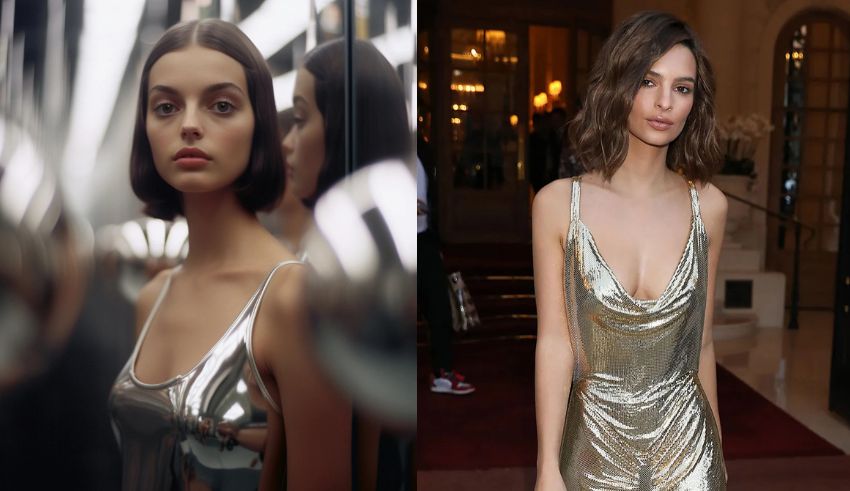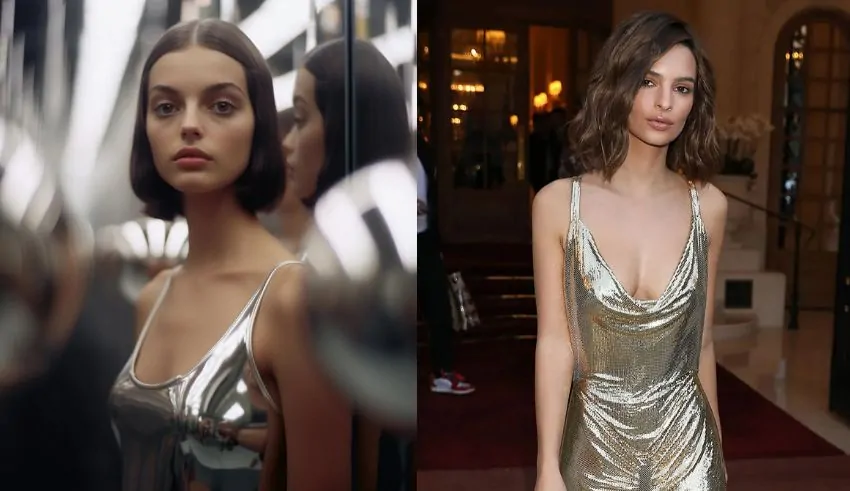

(C) Vogue
Chioma Nnadi, the editorial director of British Vogue, revealed in a surprising interview with the BBC her great worries about an increasing trend in the fashion business: the comeback of ultra-thin models. Nnadi, who took over the esteemed magazine in October 2023, has a different view on the changing fashion trends, especially the changing definition of beauty. She expressed concern about how this change might represent a larger cultural movement toward thinness, which is in part driven by the extensive use of anti-obesity medications like Ozempic.
Nnadi characterized the present in the fashion business as a worrisome “pendulum swing” back toward the exaltation of thinness. She noted, considering the cultural ramifications of this trend, “We’re in this moment where we’re seeing the pendulum sort of swing back to skinny being ‘in.” In many respects, the comeback of this physical ideal marks a perilous trip back to antiquated and destructive ideas of beauty. As Nnadi pointed out, although these trends are sometimes viewed as transient events in fashion, their social influence is long-lasting.
Although the fashion business is well-known for following trends, the comeback of ultra-thin models is more than simply a fad—it’s a strong statement on how society sees beauty and body image. Nnadi worries that the fashion industry might be undervaluing the cultural consequences of this trend, especially considering the significant influence such pictures can have on people, especially young viewers who consume media and advertising at an ever rising pace.
Nnadi claims that the adoption of anti-obesity medications like Ozempic is a major reason thinness is reemergent in the fashion business. Originally designed as a diabetic treatment, Ozempic has gained popularity for its efficiency in causing quick weight loss. Many celebrities and influencers have turned to the medication as a means of attaining smaller bodies.
Nnadi worries that the growing use of these weight-loss medications is causing a harmful normalization of thinness, hence defining the standard for beauty and attractiveness. Nnadi stated, pointing out a cultural change in the way the media presents body image, “I think there’s this shift in the culture around how we think about our bodies and how we address our bodies.” The trend is not only about looking leaner; it’s about using medical techniques to get that appearance, which begs ethical questions regarding health hazards and the morality of supporting such body standards.
The mainstreaming of these medications together with their support by some of the most powerful people in fashion and entertainment sends a message that thinness is equated with success, beauty, even health. Particularly for people who might feel obliged to match the appearance of celebrities and influencers who are publicly supporting the use of such substances, the pressure to comply with this criteria gets stronger. This dynamic is troublesome since it skews the more general debate on body acceptance and positivity, which has been gathering steam lately.
Often referred to as the “heroin chic” era, the 1990s through early 2000s saw the great popularity of ultra-thin models like Kate Moss. The fashion business pushed an image during this period that was dangerously narrow and devoid of the diversity we see developing now. This era is known for perpetuating unrealistic beauty standards, hence Nnadi worries that the present trend represents a return to these damaging behaviors.
She raises valid issues. The fashion business’s obsession with thinness seems to be resurfacing even if inclusivity and body diversity have advanced recently. Magazine covers, advertising campaigns, and social media—where the images of perfectly skinny models still predominate—also mirror this in runway presentations.
Nnadi has underlined among these issues that British Vogue is actively trying to change the portrayal of beauty in fashion by showcasing models of various sizes. Featuring models of many body shapes, skin tones, and ethnicities, the magazine has adopted a more inclusive view of beauty. Nnadi is pragmatic about the difficulties that still exist, nevertheless, in spite of these initiatives.
“Some models are especially thin,” she said, underlining that, although British Vogue is dedicated to highlighting diversity, a lack of size inclusion in the fashion business at large still limits it. Nnadi notes that Vogue and other publications cannot alone influence the industry’s size policy, especially with regard to the manufacturing of sample items. Many times, designers and manufacturers produce garments that fit a very limited range of body dimensions, thus those are the models who land the sought-after spots on the runway and in advertising.
For publications like British Vogue, this offers an annoying conundrum. They are dedicated to stretching the bounds of inclusivity, but an industry that has not yet completely embraced diversity limits them. A major obstacle to real diversity in fashion is the emphasis on sample sizes, which supports slender bodies. Even with editorial authority, this cycle of restrictions makes it impossible for periodicals to significantly question the established quo.
Nnadi’s comments highlight a more general problem: the fashion business’s ongoing dearth of variety in body forms. Although certain companies and designers have made progress toward including models of various sizes, the general portrayal of body types in high fashion is still disproportionately thin. This calls for a more profound cultural change in how the fashion business defines beauty and health, not only about showcasing several body types in magazine spreads or fashion presentations.
The impact of the fashion industry goes well beyond picture sessions and run-ways. The pictures that the business presents help to define society expectations and affect people’s view of others and themselves. Therefore, the sector has an obligation to guarantee that the beauty standards it supports are inclusive, reasonable, and—above all—healthy. Should the fashion business keep embracing thinness as the ideal of beauty, it runs the danger of erasing the advancement achieved by body-positive groups in recent times.
The fashion business needs a serious wake-up call from Chioma Nnadi as it negotiates the complexity of modern body image. The advent of anti-obesity medications and the return to ultra-thin models together pose a serious threat to the progress toward body diversity. Under Nnadi’s direction at British Vogue, one has a chance to advocate for more general fashion representation and support diversity. If the actual definition of beauty is to be attained, nevertheless, it is obvious that structural adjustments are required within the sector from designers to advertisers.
The fashion business has to rethink how it approaches body image, size, and attractiveness in a way that celebrates every person regardless of shape or size. Nnadi’s worries draw attention to the continuous fight to establish a fashion industry that celebrates diversity as a basic feature of its character rather than only as a fad. Although the road to actual inclusivity may be lengthy, the sector has to follow if it is to establish a better, more empowered surroundings for all.
Through software update Nothing OS 3.1 the company improves functionality of Phone (3a) and Phone (3a) Pro models. Global service…
China's electric vehicle (EV) giant BYD has officially taken over the global EV market, with a whopping revenue of 777…
The Japanese women’s curling team has a tough road to qualification for the 2026 Milan-Cortina Winter Olympics. Having silver and…
Rajasthan Royals vs Kolkata Knight Riders will be playing matchesin the Indian Premier League 2025 match at Barsapara Stadium, Guwahati…
Vietnam becomes the rising star for that tourism scene in the annals of Southeast Asia; it surpasses its regional competitors…
The Chinese Coast Guard ships extended their stays near the Senkaku Island region which led Japan to lodge formal diplomatic…
This website uses cookies.
Read More